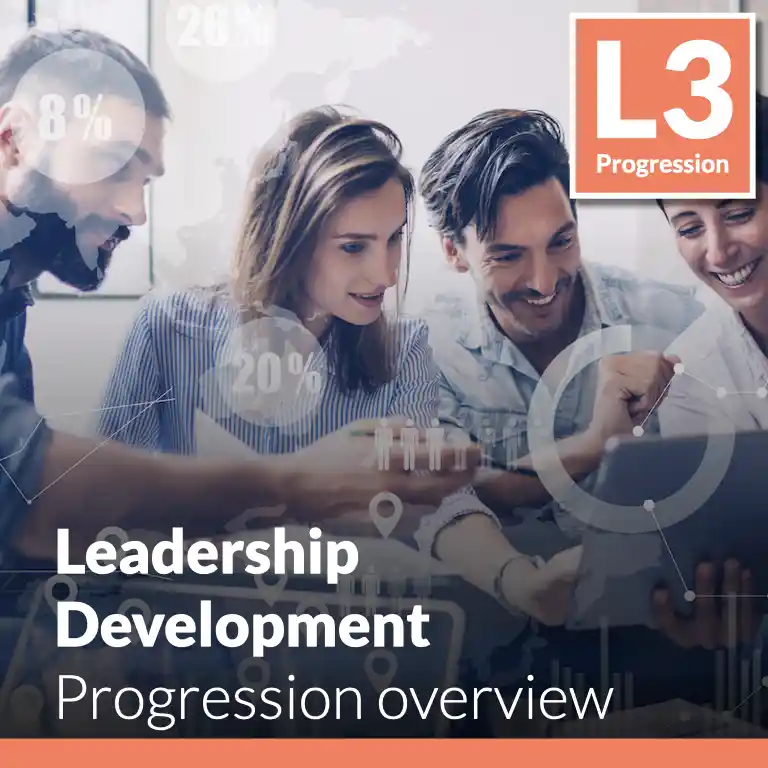Enjoy instant access to a scalable system of proven practices and execution-ready tools. Built to launch strategic HR programs 5X faster!
✓ Enjoy platform access
✓ Create your HR roadmap
✓ View open content in library
✓ Access dozens of practices:
⤷ The HR Strategy program
⤷ Explainers and deep dives
⤷ Supplemental guides
⤷ Insight articles
⤷ Weekly best practices
⤷ And more!
100% Free. No credit card required.
This guide is part of a progression set comprised of Core, Advanced, and Emerging Leadership Development practices.
Emerging Leadership Development creates a leadership culture that becomes a part of the company's fabric and is even synonymous with the company name. It is a commitment to continuously developing great leaders with investments of time, budget, and resources. It is backed by policy, practice, rewards, and recognition. It is a process that produces leaders who excel not just internally but in subsequent companies as well. In this evolved state, leaders are fully engaged in developing themselves and others by proactively identifying, developing, and supporting future leaders who will ultimately replace them in key roles. They actively oversee the full range of programs, processes, and practices that define the entire leadership development strategy, acting as champions, talent scouts, development project identifiers, and even instructors.
Leadership development moves beyond the classroom into integrated active, on-the-job learning and development with job or project assignments, coaching and mentoring, and other informal development methods used to grow future leaders through experience augmented by formal learning methods. It assumes that leaders are best developed when learning happens continuously and when they are stretched and challenged, adding skills and capabilities to carry forward into future roles. It is measured for impact to ensure that the investments required for excellence in leadership yield a suitable return. A cadre of leaders at all levels is prepared to not only excel in current roles but also advance to positions of greater responsibility and influence.
Emerging leadership development creates heightened levels of engagement with the investment of time, resources, and attention to the growth needs of managers and executives. It can do the same for all employees through improved management and leadership practices by those targeted for development. The focus on strategic skill sets can also positively impact improvements in business performance because it is a continuous process of acceleration and success of new business initiatives. It creates a “culture” of leadership that defines how individuals will perform their roles and meet expectations and how they will ideally interact and collaborate for heightened and even optimized business outcomes.
With a greater number of leaders more actively engaged in the learning and development process, leadership bench strength can be enhanced while achieving more consistent messaging around business strategies and objectives. Further, more leaders and managers can be immersed in the desired culture and have those values reinforced more consistently by a greater number of their own leaders. It supports the building of a learning culture in general, where employee skills and capabilities develop in tandem with the company's evolution. It creates an environment of certainty and value around the development of leaders with the carefully created measurement and reporting of outcomes – the efficiency, effectiveness, and business impact of the programs and practices. Such reporting leads to more comfort with the required expenditures and activity levels while building confidence in the organization’s ability to build talent from within.
Adopting these practices produces a robust environment for developing and nurturing leaders who share a commitment to the company values, direction, and management style. It creates a culture of excellence and continuous learning amongst leaders who then leverage those in a more synchronized fashion to manage business strategies, relationships, operations, and people. They create a formally defined and proactive governance structure that oversees the execution of all related activities, programs, and processes in a way that communicates the criticality of continuous development and leadership excellence to the organization and its employees. The linkages between the full range of leader identification and development initiatives and the ever-evolving business requirements are maintained through this oversight. The introduction and prevalence of blended learning programs are significantly enhanced to provide more impactful and cost-efficient delivery of learning and skill development during (and in service to) the participant's active job performance. The practices also provide objective tracking and evaluation of the efficiency and effectiveness of various development and administrative activities. These produce insights into the talent and business value of the programs and practices, reinforcing their benefits to the organization.
A leadership culture provides a clear vision that teaches leaders at all levels how to conduct themselves in the execution of strategies, operational decision-making, and people management.
Designed to increase ownership, enhance the sustainability of the processes, and reinforce the importance of continuous development of leadership to the long-term success and viability of the business.
Combining formal and informal learning methods to teach and then offer the immediate opportunity to practice, discuss, or coach new capabilities, behaviors, concepts, strategies, and skills.
Generating and tracking feedback and other metrics to evaluate the quality, value, and expense of leadership development.

Enjoy instant access to a scalable system of proven practices and execution-ready tools. Built to launch strategic HR programs 5X faster!